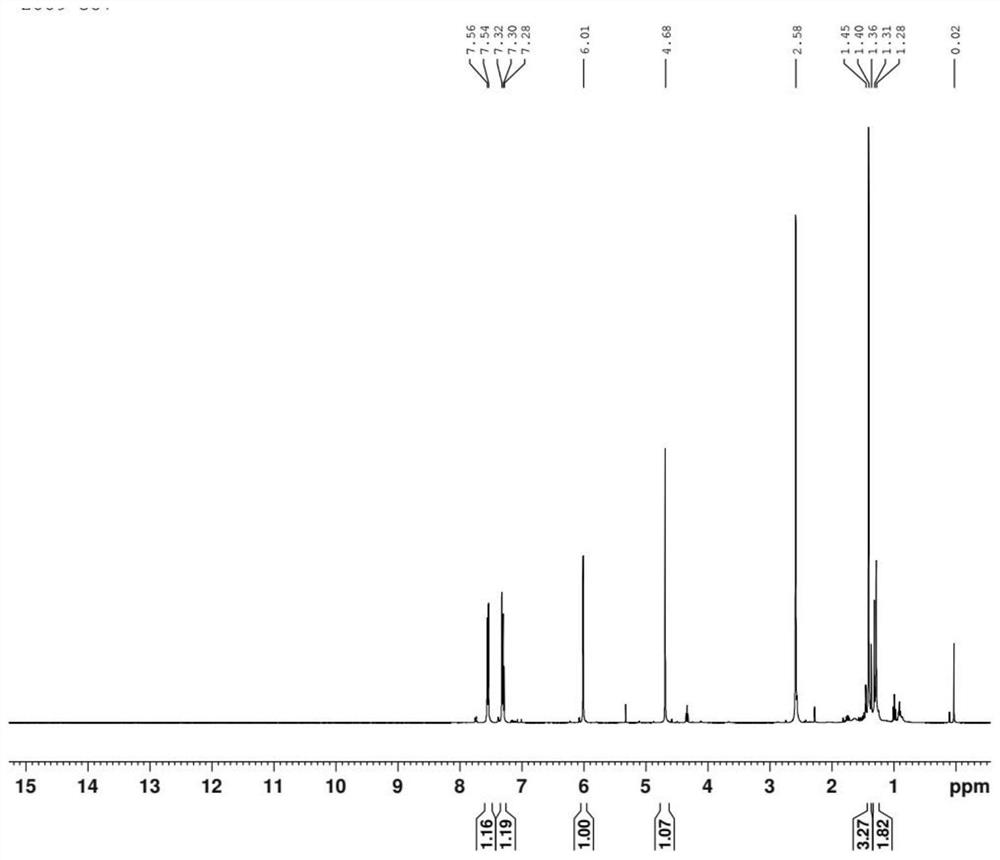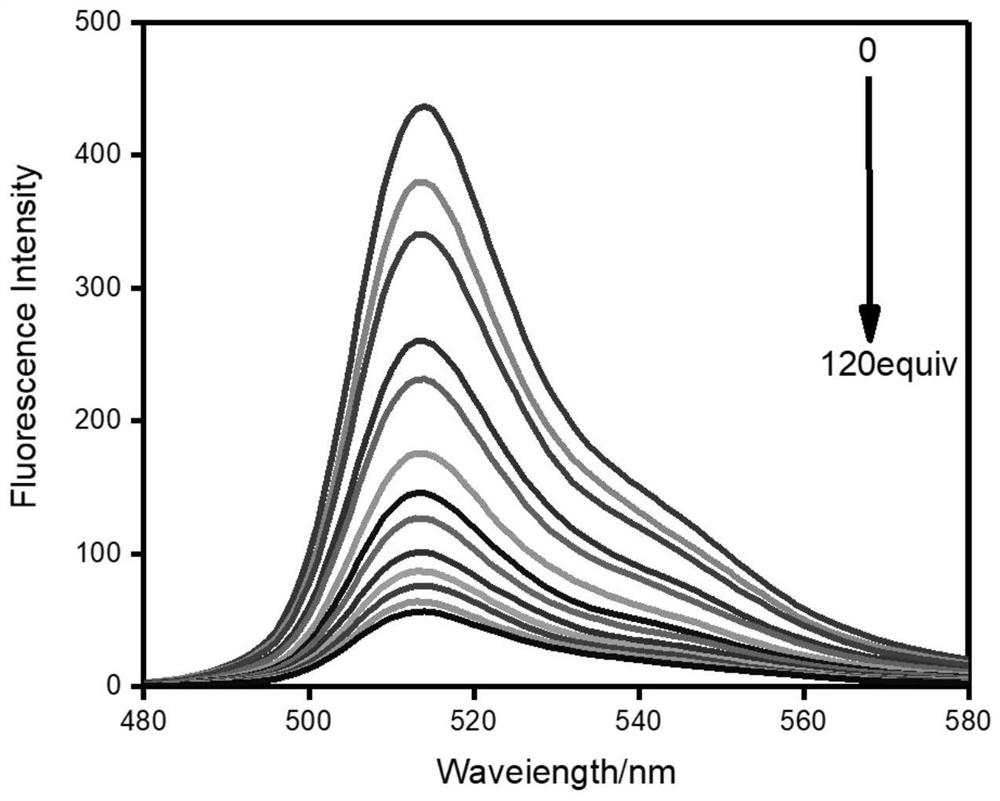Fluorescent probe for detecting Fe < 3 + > and preparation method and application thereof
A technique for fluorescent probes and compounds, applied in the field of fluorescent probes for detecting Fe3+ and their preparation, can solve the problems of expensive and precise instruments, time-consuming, complicated and cumbersome sample processing processes, etc.
- Summary
- Abstract
- Description
- Claims
- Application Information
AI Technical Summary
Problems solved by technology
Method used
Image
Examples
Embodiment 1
[0033] Embodiment 1: the synthesis of fluorescent probe
[0034] The present invention detects Fe 3+ The BODIPY type fluorescent probe is synthesized as follows:
[0035] Under anhydrous and oxygen-free conditions, dissolve 0.6798g of p-chloromethylbenzaldehyde and 0.7ml of 2,4-dimethylpyrrole in dichloromethane and stir evenly, add 0.15ml of trifluoroacetic acid and react for three hours to obtain intermediate product, then add 1.98g 2,3-dichloro-5,6-dicyanophenylquinone (DDQ), stir for one hour, add 10ml triethylamine to react for one hour, add 10ml boron trifluoride diethyl ether to react for three hours . Add 50ml of water to start the extraction, separate the organic phase, add 5g of anhydrous sodium sulfate to dry, filter with suction, rotary evaporate, and separate by column chromatography (the eluent is a mixed solution of petroleum ether / ethyl acetate=3 / 1) to obtain Product red solid 105mg (yield: 68%), as figure 2 As shown, it was confirmed that the following co...
Embodiment 2
[0038] Embodiment 2: Fluorescent detection of probes to iron ions
[0039] Dissolve the fluorescent probe prepared above in a mixed solution of water and acetonitrile, and prepare a 2 μM probe solution, add 2 mL of the prepared 2 μM probe solution of the present invention to a cuvette, and then add different concentrations of Fe 3+ After uniform mixing, the fluorescence spectrum was tested, and it was found that the fluorescence intensity increased with Fe 3+ The concentration increases and decreases, the results are as follows image 3 Shown, show that the fluorescent intensity of the fluorescent probe of the present invention varies with Fe 3+ concentration increases and decreases.
[0040] The fluorescence emission intensity of the solution at 512nm for Fe 3+ Concentration plotted, Fe 3+ When the concentration is in the range of 0–120μM, there is a good linear relationship between the two ( Figure 4 ), indicating that the probe of the present invention can realize Fe ...
Embodiment 3
[0045] Embodiment 3: Anti-interference test of probe
[0046] Add 400 μM different ion Na to the prepared 2 μM probe solution of the present invention respectively + 、K + , Li + , Mg 2+ 、Al 3+ 、Ba 2+ , Ca 2+ , Zn 2+ , Hg 2+ 、Cd 2+ 、Ni 2+ 、Co 2+ 、Cr 2+ 、Cu 2+ , Pb 2+ Afterwards, 200 μM Fe was added to the fluorescent probe solution and the fluorescent probe solution with different ions, respectively. 3+ After that, the change of the fluorescence emission intensity at 512 nm; the abscissa is the interference ion of the blank and the test, and the ordinate is the fluorescence intensity.
[0047] like Figure 8 As shown, the addition of Fe to the fluorescent probe 3+ In contrast to adding other metal ions to the fluorescent probe followed by the addition of Fe 3+ The degree of weakening of the fluorescence intensity is similar, indicating that the fluorescent probe of the present invention has excellent anti-interference, and can be used to detect iron ions in the...
PUM
 Login to View More
Login to View More Abstract
Description
Claims
Application Information
 Login to View More
Login to View More - R&D
- Intellectual Property
- Life Sciences
- Materials
- Tech Scout
- Unparalleled Data Quality
- Higher Quality Content
- 60% Fewer Hallucinations
Browse by: Latest US Patents, China's latest patents, Technical Efficacy Thesaurus, Application Domain, Technology Topic, Popular Technical Reports.
© 2025 PatSnap. All rights reserved.Legal|Privacy policy|Modern Slavery Act Transparency Statement|Sitemap|About US| Contact US: help@patsnap.com



